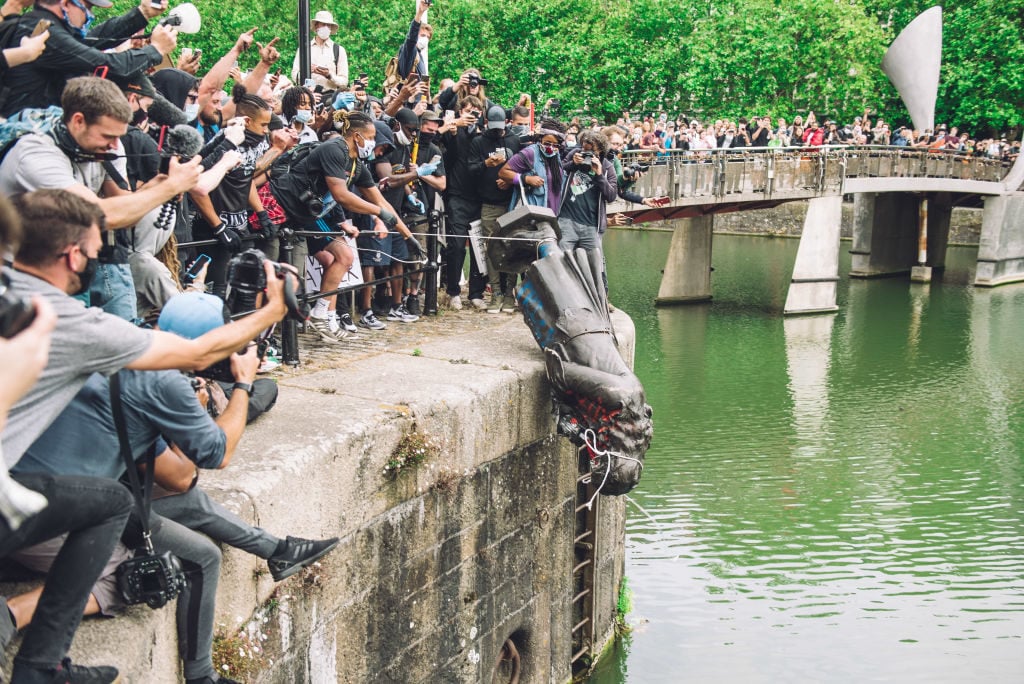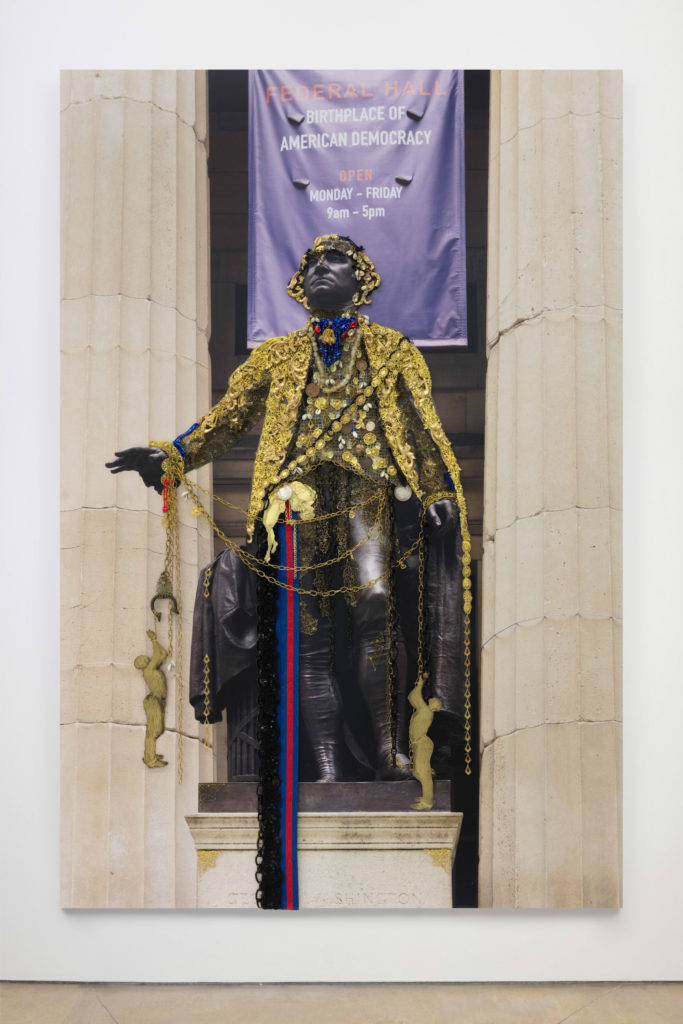Law & Politics
The U.K. Is Rolling Out a New ‘Retain and Explain’ Policy Regarding Its Controversial Public Statues
British artist Hew Locke, whose past work has engaged with controversial public statues, weighed in on the new guidelines.

British artist Hew Locke, whose past work has engaged with controversial public statues, weighed in on the new guidelines.

Jo Lawson-Tancred

The U.K. government has published its long-anticipated guidance for decision makers charged with overseeing historical statues and memorials that have become subject to controversy or face calls for their removal. Summarized as “retain and explain,” the advice is that custodians should aim to keep the monuments in situ while considering new ways to contextualize their often troubling history. Last year, the government introduced much harsher punishments for vandals who target public statues.
Compiled by government-appointed heritage experts, the guidance lays out various steps to take when dealing with calls for a monument’s relocation or removal. Step one encourages decision makers to form their own judgement about the claim. “If there is no valid evidential case for removal, or for an explanation, the custodians could decide to do nothing further and close the review,” it advised. This is referred to as Outcome A.
Alternatively, decision makers can commission a more thorough assessment of the work’s wider history and are encouraged to consult stakeholders and local communities. This may lead to Outcome B, retain and explain. The organization Historic England has released a new toolkit offering practical advice and case studies on how to better contextualize monuments either through text or alternative media.
“In rare and exceptional circumstances,” custodians may apply for permission for Outcome C, relocation. “I want all our cultural institutions to resist being driven by any politics or agenda and to use their assets to educate and inform rather than to seek to erase the parts of our history that we are uncomfortable with,” explained the U.K.’s culture secretary Lucy Frazer in a statement
“To resist being driven by politics or agenda?,” asked the British artist Hew Locke over the phone after reading the guidance. “That’s how we’ve got these things in the first place. These monuments were driven by a highly political agenda of imperial might.”

Hew Locke Washington, Federal Hall (2018). Copyright the artist, courtesy P.P.O.W.
A lower intervention approach is, in part, urged by the government so that authorities are “mindful of those who cannot be consulted, including past and future generations.” This assumes that keeping statues in place is the most neutral course of action.
“Whose opinions are you taking into account?,” wondered Locke. “Are you taking into account the people in India who died in the Bengal famine? Or the people who were in charge?” He pointed out that a figure like Robert Clive, who helped establish British rule in India in the 18th century, was despised by many of his contemporaries but later lionized with a statue erected in London in 1912.
Locke, who made a spectacle of New York City’s most polarizing monuments by dressing them up in 2018, also asked: “What will happen in reality? The retain and explain approach could give rise to a polite explanation, like a QR code. Some of these people are horrible human beings and the wording needs to be as large as the person, not a discreet thing.”
Locke gestured to the necessary scope of these explanations, if carried out comprehensively. “I’d be interested to see whether they put a plaque on James II’s statue in Trafalgar Square,” he commented. “It’s a high quality work of fine art, let’s not deny that, it comes from the Grinling Gibbons studio,” he added, but noted the king’s often understated role in the slave trade as governor of the Royal Africa Company while he was still the Duke of York. Many enslaved people were branded with the letters “DoY.”
“And he stands in plain sight as a Roman Emperor,” said Locke. “I’m against erasing history,” he summarized, “but I’m against lightly sweeping it under the carpet as well. I can see that being an outcome.”
More Trending Stories: